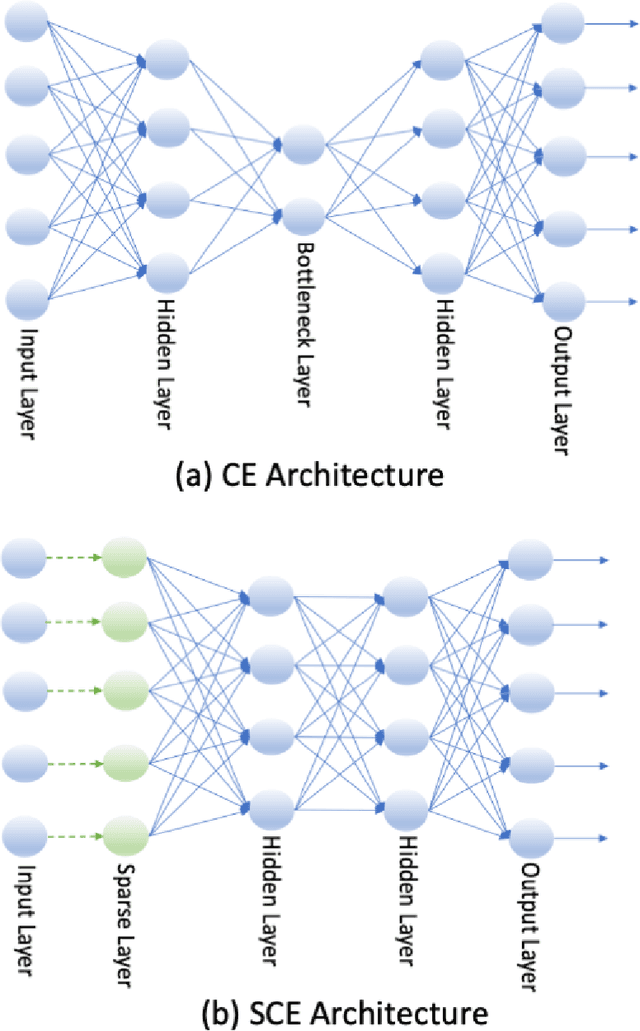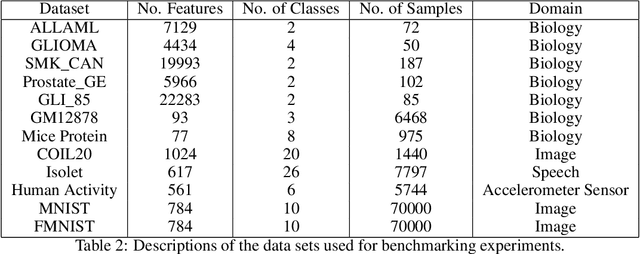Sparse Centroid-Encoder: A Nonlinear Model for Feature Selection
Paper and Code
Jan 30, 2022



We develop a sparse optimization problem for the determination of the total set of features that discriminate two or more classes. This is a sparse implementation of the centroid-encoder for nonlinear data reduction and visualization called Sparse Centroid-Encoder (SCE). We also provide a feature selection framework that first ranks each feature by its occurrence, and the optimal number of features is chosen using a validation set. The algorithm is applied to a wide variety of data sets including, single-cell biological data, high dimensional infectious disease data, hyperspectral data, image data, and speech data. We compared our method to various state-of-the-art feature selection techniques, including two neural network-based models (DFS, and LassoNet), Sparse SVM, and Random Forest. We empirically showed that SCE features produced better classification accuracy on the unseen test data, often with fewer features.
 Add to Chrome
Add to Chrome Add to Firefox
Add to Firefox Add to Edge
Add to Edge